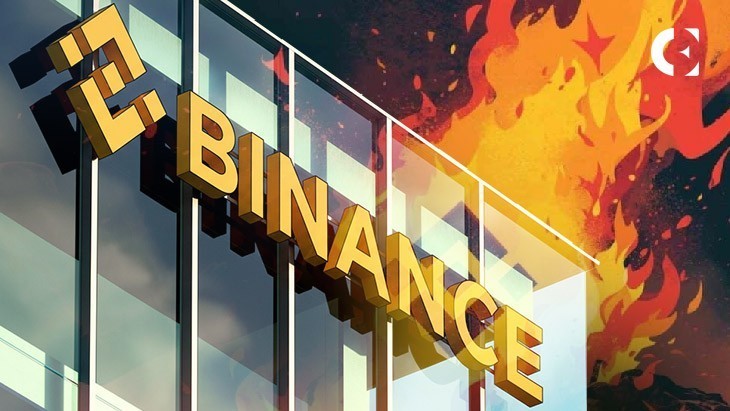In a recent Altcoin Buzz video, host Maddie breaks down the growing pressure on Binance, the world’s largest cryptocurrency exchange. With increasing market uncertainty and reports of mass exits, the big question is whether Binance is facing a serious crisis or is just experiencing temporary difficulties.
Maddy pointed out that there was a massive $40 billion market decline on October 10th that caused widespread panic. He also addressed online rumors that Crypto.com has taken legal action against Binance, but clarified that such a move has not been officially confirmed.
Related: France attacks Binance and Coinhouse, conducts thorough crypto AML checks ahead of MiCA deadline
Conflicting data about the Exchange breach
One of the big concerns is the size of Binance’s recent outflows. Coinglass reported more than $21 billion in withdrawals in a seven-day period, raising concerns about a “mounting”. However, DeFiLlama’s data tells a different story, showing instead $4.2 billion in deposits in 30 days. This led many to wonder if the panic was overblown.
Binance itself dismissed the negative reports as part of a coordinated FUD campaign to undermine trust in the platform.
Co-founder Yi He even claimed that influencers offered him $20,000 to spread false stories about Binance, but no hard evidence has come to light.
Experts say declining reserves are normal
Julio Moreno, senior analyst at CryptoQuant, confirmed that Binance’s reserves decreased by $8 billion in one week. But he also said this is not unusual. Just a few weeks ago, reserves had increased by $14 billion. Maddy added that many analysts view outflows as part of normal market cycles rather than a sign of a liquidity crisis.
Token listing dispute flares up again
Binance has also been criticized for the way it lists new tokens. CJ Hetherington, CEO of Limitless Labs, claimed that Binance is demanding tokens or payments in exchange for listing, raising questions about fairness.
Binance denied any benefit from the listing, but later deleted the statement and apologized for poor communication. Critics, especially developers, continue to call for greater transparency in how Binance approves new tokens.
Flash Crash and Binance Compensation Fund
Binance’s unified account system has been blamed for contributing to the October 10 crash. The system allowed traders to use assets such as USDE, WBETH, and BNB as collateral, and the liquidation price was set by Binance’s own order book rather than an external oracle. This structure reportedly amplified liquidation risk.
To address user losses, Binance created a $300 million compensation fund, which was later increased to $400 million. Some users, like “Crypto Tech King,” said they received partial compensation. Others claimed to have received little or nothing.
Market manipulation allegations and investigations
HyperLiquid founder Jeff Yang has accused Binance and former CEO Changpeng Chao of market manipulation and underreporting liquidations. These accusations have not been proven and no solid evidence has been found to support them.
Despite the doubts, Madi clarified that Binance’s position and deep liquidity make it difficult to completely destabilize it. But he warned that continued FUD could undermine trust in centralized exchanges.
Related: Binance disputes $21.75 billion outflow. BTC holds $111,000 as Method Mathematics catches fire
Maddy concluded his report by encouraging users to track their on-chain data and consider moving their cryptocurrencies to non-custodial wallets. He said that while Binance looks solid for now, no exchange is completely safe from systemic risk.
Disclaimer: The information contained in this article is for informational and educational purposes only. This article does not constitute financial advice or advice of any kind. Coin Edition is not responsible for any losses incurred as a result of the use of the content, products, or services mentioned. We encourage our readers to do their due diligence before taking any action related to our company.


